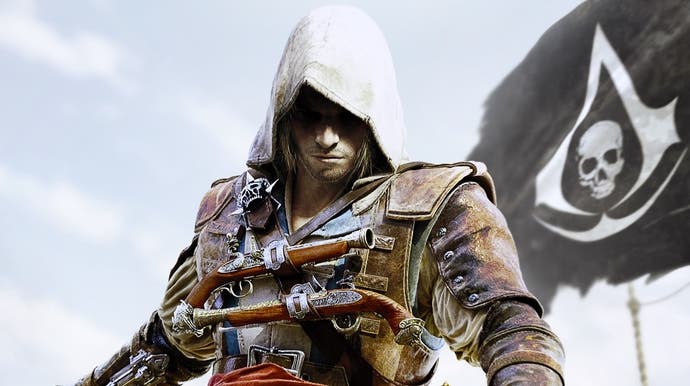Assassin's Creed: The Rebel Collection - a last-gen classic shines on Switch
A portable Black Flag? Yes please.
The Ezio Collection is still a notable absence but Ubisoft continues to bring its back catalogue of Assassin's Creed titles onto Nintendo Switch, this time with The Rebel Collection - combining the last two last-gen series entries into one release. Assassin's Creed 4: Black Flag and AC Rogue are now available on Switch with all DLC included. It's a whopping 20GB install in total, so what does this actually deliver? Are we getting a mildly upgraded last-gen experience or a hybrid release with some of PS4 and Xbox One's enhancements?
First up, I think it's worth stressing that it's a genuine pleasure to see these games again. Black Flag re-invigorated the series, adding an emphasis on ship-to-ship battling, taking the series from parkour to large scale naval warfare. Calm coral blue bay areas quickly turn to stormy seas - a battleground beholden to wave deformation. It's exhilarating to watch and looks wonderful in both games, which are well-delivered on Switch and in many respects, superior in play compared to the PlayStation 3 version.
Yes, they are ports - but some thought has gone into the conversions. Quality of life improvements are made, for example. The HUD is adjusted, HD Rumble is supported and there's also the ability to use the Joy-Cons' motion controls for aiming. If you liked the approach to Ubisoft's Assassin's Creed 3 Switch port, this follows suit. In terms of basic rendering specs, that means you get an impressive upgrade over last-gen's native 720p resolution, with both Black Flag and Rogue delivering a dynamic 1080p when docked. Standard 1920x1080 is the upper bounds there, but resolution will drop in intense scenes.
In naval warfare and in dense forest spots, the lowest I measured is around 1600x900 in Black Flag. For Rogue I've counted a little lower as the worst point, at 1472x828. However, on balance it's surprising how much of the experience remains at the target 1080p. Also impressive is that the portable experience is mostly fixed at 1280x720 to match the screen's native resolution, and while we didn't pick out any DRS in the action, it may well be there in extreme cases. All round, the port is competent where it needs to be. The resolution improvement over last-gen is clear and the wobbly 20-60fps unlocked frame-rate of the older games is gone with a more preferable capped 30fps in place instead.
Dynamic resolution scaling seems to be doing a good job here in stabilising performance. While it's not a clean, locked, properly paced 30fps for the entirety of the experience (as it was on PlayStation 4) the performance level is mostly there and only drops sporadically - and even then, we're still in the high 20s. Black Flag - the star of the show - is more stable overall than Rogue, but the performance outlook overall is sound enough. The same situation applies to the mobile experience, which is arguably better still. There seems to be a better lock to the target resolution and while performance is not perfect, it's even closer to a stable 30fps.
In terms of visual features, the conversion team had two directions it could pursue. The final AC titles for PS3 and Xbox 360 were designed to be cross-generational in nature. Black Flag launched on all systems in 2013, with specific upgrades reserved for PlayStation 4 and Xbox One - so the question is really how Switch's visual feature set slots in. Well, similar to the Assassin's Creed 3 Switch port, we're mostly in last-gen territory here - though it's curious to see that the new conversion seems to have a less refined anti-aliasing resolution than PlayStation 3.
However, the Switch rendition of the engine delivers higher quality ambient occlusion, better texture filtering and superior shadows all-round. The textures are the same, as is vegetation quality, while NPC counts are perceptibly a match. Factoring in the additional resolution on top of that, we're very much looking at an enhanced last-gen game in visual returns to the point where even reflection quality is a match between them, which was a distinct improvement with the current-gen console iterations of these games.
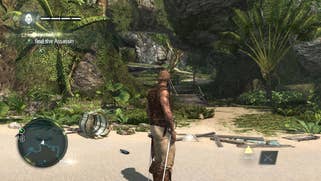



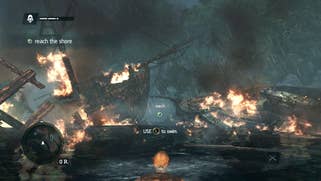
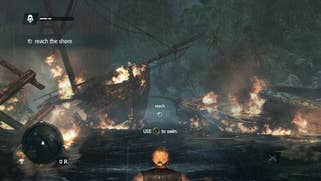
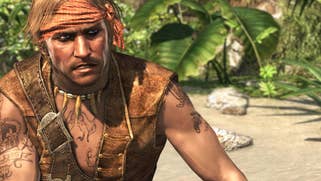
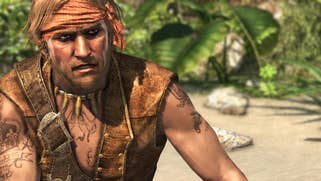
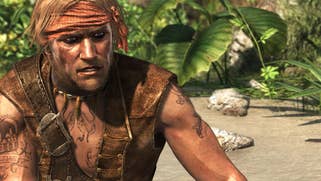
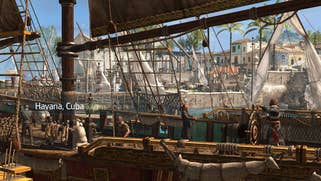
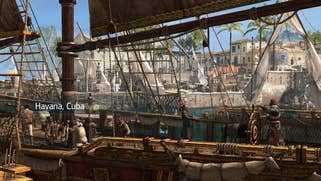

Only when we stack up the Switch games against PlayStation 4 do we start to see the limitations of the Switch port. The higher resolution textures are gone - which were likely too much for the 3.5GB of usable VRAM on Switch. Equally, materials on character models are a clear step up on PS4, as are the improved screen-space reflections, motion blur, and effects like rain. A form of tessellation is also used on rocks too, which Switch misses out on. Plus of course, the interactive plant-life of the remaster - with physics based properties - now sits idle Switch, just as it did on the last-gen consoles. The extra bling would have been nice, of course, but in all other respects, the Switch port is feature-complete and I'm happy with the package overall.
However, there is one noticeable cut-back that I do find problematic. Compared to all other releases, audio is compromised - just as it was in Assassin's Creed 3 Remastered. It's mainly the compression on recorded dialogue that's the problem: put some headphones on, as I did, and it sticks out as being of a lower bit-rate, more so than I noticed on other versions. This is something to bear in mind if you've a keen ear or if you play with Switch plumbed into a decent speaker system. Otherwise, through the Switch's own integrated speakers it does hold muster.
All things considered, I'd call The Rebel Collection a win overall. The resolution is a huge increase on the last-gen versions, better suiting today's living room displays, while performance is closer in nature to the PlayStation 4 and Xbox One releases. The games themselves are excellent and Switch itself sees these great games reborn as excellent handheld experiences, where they still feel fresh and exciting. It's also a new lease of life for Rogue in particular, which was overshadowed somewhat - for better or worse - by the other AC 2014 release, Assassin's Creed Unity.
What lies ahead for the series on Switch is potent. For ports, the only way forward is backwards, towards The Ezio Collection - which has already made an appearance on PS4 and Xbox One. To see the whole Assassin's Creed lineage on this handheld would be great, no doubt, but what I'd really like to see would be a bespoke Switch release, built from the ground up with the system's strengths in mind. PlayStation Vita had its own moment to shine with AC3 Liberation and surely by this point, Switch has done more than enough to warrant its own series entry. For now though, The Rebel Collection is a great way to check out a rightly celebrated era of Assassin's Creed history - a 'remaster' of sorts for living room play, but a release that really comes into its own as an excellent portable experience.
